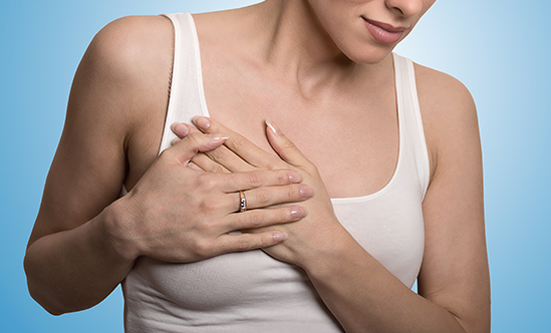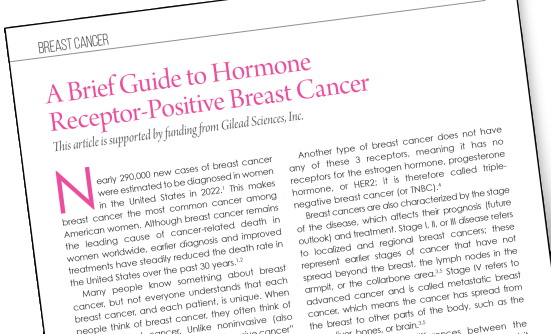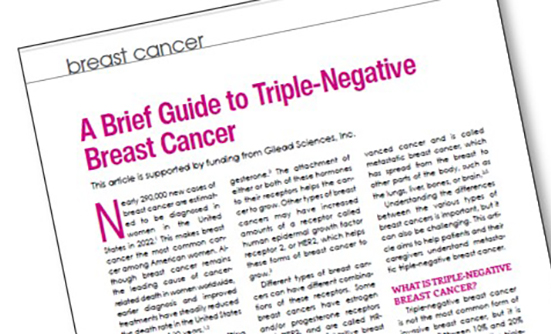Question: I was diagnosed with breast cancer last year and underwent a mastectomy with reconstruction and then chemotherapy and radiation therapy. My affected side feels tight and painful. I read about postmastectomy pain syndrome online. Do I have that? If so, will cancer rehabilitation help me, and how?
Upper extremity pain after diagnosis and treatment of breast cancer is common and can be very debilitating. The pain can be related to the cancer itself, or it can be a side effect of cancer treatment. A number of potential diagnoses are possible, including cancer metastases, rotator cuff dysfunction, frozen shoulder, and possible radiculopathy, but postmastectomy pain syndrome is also a possibility. Postmastectomy pain syndrome is also known as postmastectomy pain or intercostobrachial nerve entrapment syndrome.
Cancer rehabilitation is perfectly suited to help diagnose the cause of your pain and create an appropriate treatment plan. Physicians who specialize in cancer rehabilitation are familiar with the different disorders that can occur as a result of cancer and its treatment, and are also well acquainted with the different treatment options for those disorders. The goal of cancer rehabilitation is to improve the quality of life by maximizing independence and physical function.
Postmastectomy pain syndrome is defined as a chronic neuropathic pain disorder, meaning that symptoms have been present for more than 3 months. It is caused primarily by damage to local nerve tissue either by invasion from cancerous tissue or from damage to the nerve tissue as a result of cancer treatment. Studies show that between 25% and 60% of women with breast cancer have postmastectomy pain syndrome.1 However, the syndrome can also occur in more minor procedures to the breast.
Causes
Postmastectomy pain syndrome can occur with any breast procedure that causes nerve damage, including lymph node dissection, lumpectomy, radical or modified mastectomy, or breast reconstruction or augmentation. It is often caused by damage to the intercostobrachial nerve. This nerve provides sensation to the middle and the back of the arm, the armpit, and the side of the chest.
Identifying the cause of postmastectomy pain syndrome is important for treatment decisions. Psychological distress plays a strong role in shaping the perception of pain and contributes to individual differences in the pain experience. People who have a history of anxiety disorders or difficulty coping with stress are more likely to develop postmastectomy pain syndrome.1
Occasionally, a collection of blood (hematoma) in the armpit can lead to postmastectomy pain syndrome.2 For women who have had a radical mastectomy (removal of both breasts), the pain may be caused by what is called “phantom breast pain” rather than by postmastectomy pain syndrome.
Symptoms
Postmastectomy pain syndrome is often described as “burning, tingling, pins and needles, stabbing, constricting, or a constant dull ache” in the breast, armpit, or both. The pain usually begins immediately after surgery but can also begin more than 6 months later.3,4
Some patients have areas of reduced sensation or areas that are more sensitive to touch compared with the surrounding tissue. Movement of the arm usually makes the pain worse. This may lead to shoulder and arm immobility that may cause a loss of strength and joint problems.
Diagnosis
Evaluating postmastectomy pain syndrome should include a thorough physical exam with particular attention to the incision site, skin sensation, and mobility of the shoulder and arm. If there are any areas of hypersensitivity, the physician should look for a neuroma–an abnormal growth of nerve tissue. Your physician may also obtain a mammogram, MRI, or PET scan to rule out recurrence of cancer. Pain wrapping around the chest may be caused by a pinched spinal nerve (radiculopathy). This can be diagnosed with an MRI of the spine or with a study that examines nerve conduction.
Treatment
The treatment of postmastectomy pain syndrome involves treating neuropathic pain as soon after surgery as possible with medications, physical therapy, and interventional procedures. Medications for postoperative pain control are important. Pain that persists long after surgery may require the addition of medication for neuropathic pain, and rarely, morphinelike drugs. Neuropathic pain medications include Neurontin (gabapentin), Prozac (fluoxetine), and others.
Possible interventions include intercostal nerve blocks, which help to see if a sensory nerve is the cause of the pain. First, a diagnostic injection assesses if numbing the sensory nerve leads to pain relief. If successful, the nerve can then be targeted and destroyed by using heat.
Physical therapy is critical to preserve the range of motion.
Once a pain-free full range of motion is established, therapy should focus on strength and flexibility.
Cancer Rehabilitation
Postmastectomy pain syndrome is a common cause of pain and loss of function. An evaluation by a cancer rehabilitation specialist can help to reduce your pain, mobility, and strength, and restore your quality of life.
References
- Belfer I, Schreiber KL, Shaffer JR, et al. Persistent postmastectomy pain in breast cancer survivors: analysis of clinical, demographic, and psychosocial factors. Journal of Pain. 2013;14:1185-1195.
- Blunt C, Schmiedel A. Some cases of severe postmastectomy pain syndrome may be caused by an axillary haematoma. Pain. 2004;108:294-296.
- Carpenter JS, Andrykowski MA, Sloan P, et al. Postmastectomy/postlumpectomy pain in breast cancer survivors. Journal of Clinical Epidemiology. 1998;5:1285-1292.
- Carpenter JS, Sloan P, Andrykowski MA, et al. Risk factors for pain after mastectomy/lumpectomy. Cancer Practice. 1999;7:66-70.














